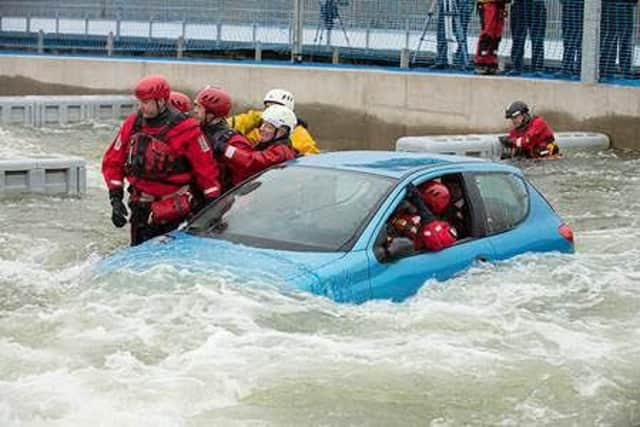Firefighters show their skills in mock rescues at day of action


The event took place at the Scottish Fire and Rescue Service (SFRS) National Training Centre in Cambuslang and a dedicated water sports facility in Glasgow.
Crews used their specialist skills to conduct mock road rescue, water rescue and trauma care operations designed to replicate serious emergencies facing frontline responders.
Advertisement
Hide AdAdvertisement
Hide AdSFRS personnel from Aberdeenshire, Ayrshire, Dumfries and Galloway, Glasgow, North Lanarkshire and Lothian were involved in the Scottish Rescue Challenge, which was run in conjunction with the UK Rescue Organisation (UKRO). The crews were also joined by police officers.
Experienced assessors scored the crews’ performances over the two-day event and awards were given to the top teams.
A team from Ayr won the road traffic collision challenge, which saw crews working to safely rescue trapped casualties from a number of ‘crashed’ vehicles in a difficult emergency scenario within a 20 minutes timeframe.
The trauma challenge included a worker who lost a limb on a live railway line after being struck by a train and another who had collapsed in a chemical factory. Crews were expected to quickly identify injuries and provide emergency treatment and the team from Whitburn in West Lothian was placed first.
Advertisement
Hide AdAdvertisement
Hide AdTeams from Huntly in Aberdeenshire, Stepps in North Lanarkshire and Stranraer in Dumfries and Galloway also took part in the extrication and trauma care events.
The water rescue challenge saw SFRS teams and police colleagues negotiating swift currents to get people safely from houses and vehicles engulfed by rising waters at the Pinkston Water Complex in Glasgow.
Assistant Scottish Chief Fire Officer Lewis Ramsay, said: “The challenges are an excellent opportunity for crews to improve and build upon their existing skills and ensure we deliver a first class service to communities.”